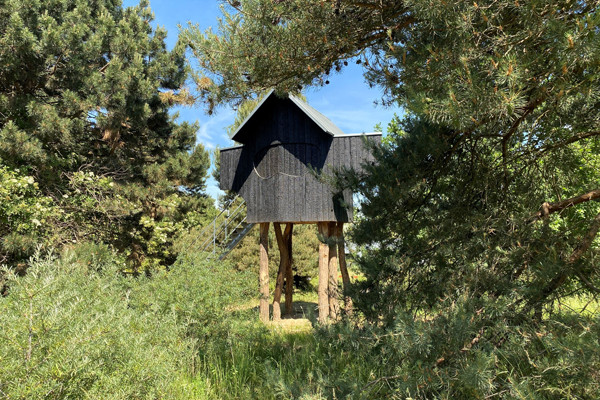Terunobu Fujimori
The Ein Stein Tea House was planned and realized over a year and now forms an exhibit on a scale of 1:1, which will be preserved by the Stiftung Insel Hombroich. It reflects the precise knowledge of the history and principles of the tea ceremony and its very personal interpretation by the architect and historian Terunobu Fujimori. In particular, natural materials such as untreated robinia trunks and a wooden boarding carbonized by the traditional Yakisugi method were used.
Exhibition
The architect Terunobu Fujimori (*1946) researched, taught and published as a historian before he developed his first own design at the age of 45. Since then, he has realized projects that have received strong international attention. In his tea houses as well as in his large buildings, he uses natural materials and distinguishes himself from common formal languages with stubborn ideas.
The exhibition Terunobu Fujimori. Ein Stein Tea House and other Architectures was developed together with the Japanese architect. The selection of projects focuses on tea houses he planned, in particular the Ein Stein Tea House designed for the Raketenstation Hombroich and its genesis. Like other buildings and furniture on display, the tea houses are characterized by the use of natural materials and their relationship to the surrounding landscape.
Karl Heinrich Müller, the founder of Museum Insel Hombroich, had a special interest in the tea ceremony as well as in objects and works of art from the context of this centuries-old tradition. The Foundation's collection includes numerous tea bowls and other vessels that were used in ceremonies. A selection not previously shown is on display.
Terunobu Fujimori combines a sociological interest with a neo-dadaist sensibility, in which he has been capturing absurd situations in Japanese urban space in photographs and drawings since the early 1970s. In 1986, together with Genpei Akasegawa, Joji Hayashi, Tetsuo Matsuda and Shinbo Minami, he formed the ROJO Society for Roadside Observation Studies, whose observations the exhibition provides insight into.
